Clancy Tucker's Blog, page 245
September 30, 2015
1 October 2015 - 5-STAR AMAZON REVIEW FOR 'SHEEZA'

5-STAR AMAZON REVIEWFOR 'SHEEZA'*****
G'day folks,
Today, I received a great review for one of my favourite books - SHEEZA. This review was provided by one of Australia's most noted poets, Vicki Case. Also, at the bottom of this post is a great comment by an American living in Australia, Tracy Dumpert. Tracy has just finished reading 'Gunnedah Hero' and 'A Drover's Blanket'.

Australia's award winning author - Clancy Tucker, is an exceptional literary talent. He has the ability to captivate your interest & emotions from the inaugural page. He then takes you on the emotional roller-coaster journey his book has in store for you.
Sheeza is no exception. This story absorbed me immediately. I found myself feeling the pain & anguish of a young boy who was struggling to fulfil his dream of owning a kelpie dog. One day fate; & a well-constructed argument with his mother; step in and his dream comes to fruition. His dreams of one day competing in a sheep dog trial with his dog are finally achievable.
However, after a motor vehicle accident, Danny lost his leg & had it replaced with an artificial limb; constricting his movement/s somewhat. The kelpie pup that chose him at the pet shop also had a slight deformity in her leg. Together they formed an incredible bond & trained regularly with their goal in sight.
On their novice attempt they win a sheep dog trial. Then, the selfish act of an individual shatters both their lives when Sheeza is stolen by a truck driver outside the pet shop where she was tied up while Danny paid the final amount he owed the store owner for her. They search & search for months but nothing. Then, one fateful day Sheeza is found many, many miles from home & returned to Dan.
Sheeza had my emotions throughout. I found myself crying tears of joy in some chapters & tears of heartbreak & sorrow in others. I felt as though I was in the story; that it could have easily been me.
I highly recommend this book to everyone. It is a great book that will stay with me forever.
I truly loved this story so much Clancy. Thank you so much for giving it life. It’s another of your great books that would make an amazing movie.
Vicki Case


Comments by Tracy Dumpert, regarding 'Gunnedah Hero' and 'A Drover's Blanket':
Clancy,
Hi. I don't normally send emails like this. However, I finished 'Gunnedah Hero' and 'A Drover's Blanket'. Great books. I couldn't put them down.
I'm an American living near Gosford NSW and commuting to Sydney everyday. The books kept me engaged each day on the train. My only challenge was holding back tears while people sit beside me on the train and look at me funny, sniffing. I like to read books dealing with Aussie heritage. And these were great.
Thanks,
Tracy Dumpert
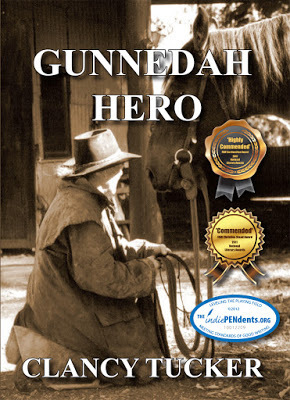

Clancy's comment: Well, there ya go, folks. Looking for a good Christmas present? Look no further. You've heard how good these books are, and further reviews can be seen at the top of this blog. So, head up to the book shop and grab a copy of these books; paperback or e-books.
Many thanks to Vicki Case and Tracy Dumpert for taking the time to comment on my work. Love ya work!
I'm ...


Published on September 30, 2015 04:24
September 29, 2015
30 September 2015 - WHO CREATED THE FIRST ALPHABET?

WHO CREATED THE FIRST ALPHABET?
G'day folks,
Ever wondered who created the alphabet? Well, here ya go ...
Before the alphabet was invented, early writing systems had been based on pictographic symbols known as hieroglyphics, or on cuneiform wedges, produced by pressing a stylus into soft clay. Because these methods required a plethora of symbols to identify each and every word, writing was complex and limited to a small group of highly-trained scribes. Sometime during the second millennium B.C. (estimated between 1850 and 1700 B.C.), a group of Semitic-speaking people adapted a subset of Egyptian hieroglyphics to represent the sounds of their language.
This Proto-Sinaitic script is often considered the first alphabetic writing system, where unique symbols stood for single consonants (vowels were omitted). Written from right to left and spread by Phoenician maritime merchants who occupied part of modern Lebanon, Syria and Israel, this consonantal alphabet—also known as an abjad—consisted of 22 symbols simple enough for ordinary traders to learn and draw, making its use much more accessible and widespread.

By the 8th century B.C., the Phoenician alphabet had spread to Greece, where it was refined and enhanced to record the Greek language. Some Phoenician characters were kept, and others were removed, but the paramount innovation was the use of letters to represent vowels. Many scholars believe it was this addition—which allowed text to be read and pronounced without ambiguity—that marked the creation of the first “true” alphabet.
The Greek language was originally written from right to left, but eventually changed to boustrophedon (literally, turning like oxen)—where the direction of writing alternated with every line. By the 5th century B.C., the direction had settled into the pattern we use today, from left to right. Over time, the Greek alphabet gave rise to several other alphabets, including Latin, which spread across Europe, and Cyrillic, the precursor of the modern Russian alphabet.

Clancy's comment: Interesting, eh? Long live the Greeks!
I'm ...


Published on September 29, 2015 03:16
September 28, 2015
29 September 2015 - WOMEN WHO HAVE WON NOBEL PRIZES
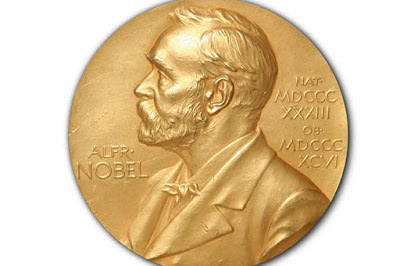
WOMEN WHO HAVE WON NOBEL PRIZES
G'day folks,
I think you will find this very interesting. I sure did. As a male, I've always been a great advocate for women, kids, and those who cannot stand up for themselves, for whatever reason. You may ask why? Well, it's easy. I was brought up in a tough environment, and I still recall what my mother went through at the expense of my father who came back from the war a total mess. Fortunately, I turned a negative situation into a positive life experience. Having said that, let me highlight some women who have been rewarded for great work.
When it comes to record-setting Nobel Prize recipients, there’s Marie Curie and there’s everyone else. The Polish-French scientist was the first woman to share a Nobel Prize (the 1903 physics award, with her husband Pierre and fellow French scientist Henri Becquerel, for their pioneering work on radioactivity) and was also the first woman to receive an unshared Nobel, the 1911 chemistry prize, for her discovery of the elements radium and polonium. That makes her the only person ever to win Nobel Prizes in two different sciences. As if that weren’t enough, four of her family members are also Nobel laureates. In addition to Pierre, her daughter and son-in-law shared the 1935 chemistry prize, while another son-in-law was the director of UNICEF when it won the 1965 peace prize.

The first woman to win the Nobel Peace Prize was Baroness Bertha Sophie Felicita von Suttner, née Countess Kinsky von Chinic und Tettau, who won in 1905. Von Sutter was the author of an influential anti-war novel and had a leading role in convincing dynamite magnate Alfred Nobel to include a peace prize in his bequest. The first female Nobel literature laureate was novelist Selma Lagerlöf, whose most popular book was about a boy who flies around Sweden on the back of a goose. The first woman to win the Nobel Prize for Physiology or Medicine was Gerty Theresa Cori, who shared the 1947 award for discovering how sugar-derived glycogen is used by the body as an energy source.

The last first woman to win the Nobel in her category was Elinor Ostrom, who shared the 2009 economics prize for her groundbreaking analysis of common property. The wait was so long for a woman economics laureate in part because that prize wasn’t established until 1969. In all, as of 2013, Nobel Prizes have been awarded to 44 different women.

Clancy's comment: You go, girls. Love ya work!
I'm ...


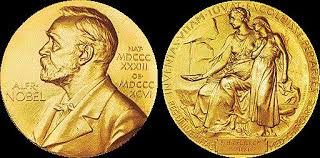
Published on September 28, 2015 05:12
September 27, 2015
28 September 2015 - WHY IS A MARATHON 26.2 MILES?

WHY IS A MARATHON 26.2 MILES?
G'day folks,
Here is another challenging question for you. Know the answer?
The marathon may have ancient roots, but the foot race’s official length of 26.2 miles wasn’t established until the 20th century. The first organized marathon was held in Athens at the 1896 Olympics, the start of the Games’ modern era. The ancient games, which took place in Greece from around 776 B.C. to A.D. 393, never included such long-distance races. The idea for the modern marathon was inspired by the legend of an ancient Greek messenger who raced from the site of Marathon to Athens, a distance of about 40 kilometers, or nearly 25 miles, with the news of an important Greek victory over an invading army of Persians in 490 B.C. After making his announcement, the exhausted messenger collapsed and died. To commemorate his dramatic run, the distance of the 1896 Olympic marathon was set at 40 kilometers.
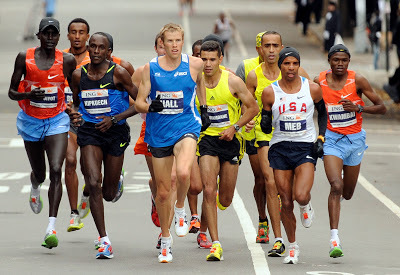
For the next few Olympics, the length of the marathon remained close to 25 miles, but at the 1908 Games in London the course was extended, allegedly to accommodate the British royal family. As the story goes, Queen Alexandra requested that the race start on the lawn of Windsor Castle (so the littlest royals could watch from the window of their nursery, according to some accounts) and finish in front of the royal box at the Olympic stadium—a distance that happened to be 26.2 miles (26 miles and 385 yards). The random boost in mileage ending up sticking, and in 1921 the length for a marathon was formally standardized at 26.2 miles (42.195 kilometers).
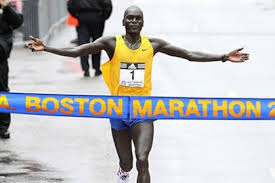
Today, marathon races take place everywhere from the North Pole to the Great Wall of China. In America alone, there are now more than 1,100 marathons each year. For decades, marathons were only open to male athletes. The Boston Marathon, which kicked off in 1897 and is the world’s oldest annual marathon, began allowing female competitors in 1972, while the first Olympic marathon for women wasn’t held until 1984. In 1976, an estimated 25,000 runners finished marathons in the United States; by 2013, the estimated number of competitors who completed a 26.2-mile course had soared to 541,000.

Clancy's comment: Mm ... Interesting answer, eh? I bet you never knew that. I sure didn't.
I'm ...

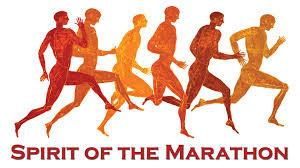
Published on September 27, 2015 03:33
September 26, 2015
27 September 2015 - FACTS ABOUT TICKER-TAPE PARADES
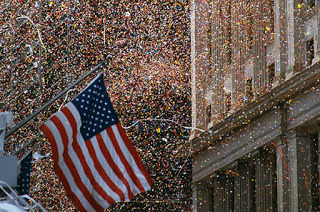
FACTS ABOUTTICKER-TAPE PARADES
G'day folks,
I bet we have all seen a ticker-tape parade on television. Since 1886, New York City has thrown more than 200 ticker-tape parades honoring a wide range of groups and individuals. While other cities have held similar celebrations, ticker-tape parades down New York’s iconic “Canyon of Heroes” have become major events and a unique way to honor notable achievements. Check out seven surprising facts you may not know about these celebrations.
1. The first one was impromptu.
While ticker-tape parades are now meticulously scheduled, the first ever was far from it. On October 28, 1886, as the parade in honor of the dedication of the Statue of Liberty marched up Broadway, employees spontaneously threw ticker tape out of their office windows to join in the celebration, giving the tradition its name. Celebrations continued intermittently over the next few decades, with more formally scheduled events beginning in 1919 with a parade for 25-year-old Edward Albert, the Prince of Wales. For more than 35 years, Grover Whalen played the role of official “greeter” and organizer of the festivities. Now, New York City’s mayor decides who is honored with an official parade.
2. They aren’t just for sports teams.
The ticker-tape parade is mostly closely associated with New York sports teams, but that wasn’t always the case. The first athletes weren’t honored until 1924, and before 1999 the parades were primarily used to honor world leaders, military veterans and astronauts, and to celebrate achievements in exploration, aviation and science. The astronauts of Apollo 11 were honored in 1969 after the moon landing. Theodore Roosevelt was welcomed back from his African safari with a parade. And Nelson Mandela, Albert Einstein, Pope John Paul II, John Glenn, Amelia Earhart, Queen Elizabeth II and John F. Kennedy are a few more of the many individuals to receive a parade in their honor.
Individual athletes have also been honored, including Jesse Owens for his performance at the 1936 Olympics and Althea Gibson after winning Wimbledon in 1957. Major League Baseball’s Sammy Sosa, who finished second in the 1998 home run race, received a parade to acknowledge his relief work in the Dominican Republic after Hurricane Georges.
Polar explorer Richard E. Byrd is the individual to be honored the most, with three parades. The first was in 1926, following the first flight over the North Pole. The following year, Byrd was part of a double parade that took place honoring two transatlantic flights. In 1930, Byrd was honored again, this time for flying over the South Pole, as well as his first Antarctic expedition.
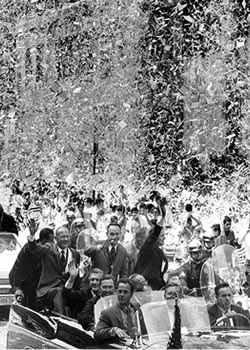
3. Only one women’s sports team has had its own parade.
The 2015 parade in honor of the United States women’s national soccer team, which won its third FIFA Women’s World Cup with a 5-2 win over Japan on July 5, 2015, became the first to ever honor a women’s team. Female athletes had been honored as individuals and as members of U.S. Olympic teams, but never before had a women’s team been honored on its own. They also became the first non-New York based sports team to receive its own ticker-tape parade.
Before the U.S. women’s team’s parade, the last female athlete to have her own parade was Carol Heiss, a Queens native who won gold in figure skating in 1960. Gymnast and Olympic gold medalist Mary Lou Retton was among those honored following the 1984 Olympics, the last time female athletes were honored in a ticker-tape parade before 2015.
4. Ticker-tape is no longer used.
Though known as “ticker-tape parades,” the parades themselves have not featured ticker tape in quite some time. The 1-inch strip of paper was used to print stock quotes from the ticker machine, popular in lower Manhattan’s financial district, which became the parade route. As the stock exchange moved to electronic boards in the 1960s, ticker tape was no longer in use, and shredded paper and confetti took its place.
5. General MacArthur received one after being relieved of duty.
Despite being removed from command by President Harry Truman, in 1951 General MacArthur received one of the biggest ticker-tape parades ever held in New York City. It extended over 19 miles of Manhattan, drew over 7 million spectators and featured 3,000 tons of paper.
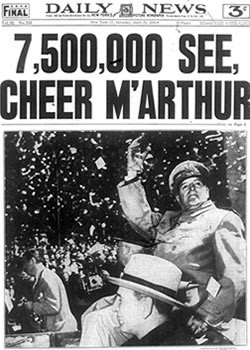
6. The most material ever thrown for a parade was in 1945.
Following the Allied victory over Japan in 1945, over 5,000 tons of paper, confetti, cloth and more streamed down, the most material ever used—100 times as much as the average parade. Other well-papered parades include ones held after for astronaut John Glenn and Douglas MacArthur, when American hostages returned from Iran in 1981 and following the Mets’ first World Series win in 1969.
7. Each parade is commemorated with a plaque along the Canyon of Heroes.
In 2003, New York City marked the parade route with over 200 thin black granite markers, noting each parade with the date and a brief description—a New York version of the Hollywood Walk of Fame. Some parades have traveled different parts of New York than the one-mile stretch of Broadway between the Battery and New York City Hall, known as the Canyon of Heroes, but they are honored with a plaque just the same.

Clancy's comment: I've driven in two parades, but have never witnessed a ticker-tape parade. What about you?
I'm ...


Published on September 26, 2015 01:38
September 25, 2015
26 September 2015 - WHERE DID THE Rx SYMBOL COME FROM?

WHERE DID THE Rx SYMBOL COME FROM?
G'day folks,
Do any of you know where this symbol came fom? Well, check this out ...
Commonly seen on doctor’s prescription pads and signs in pharmacies, Rx is the symbol for a medical prescription. According to most sources, Rx is derived from the Latin word “recipe,” meaning “take.” Among several alternative theories, however, is the belief that the Rx symbol evolved from the Eye of Horus, an ancient Egyptian symbol associated with healing powers. What is known for certain is that the practice of pharmacy, the preparation and dispensation of drugs, has been around for thousands of years. The world’s first recorded prescriptions were etched on a clay tablet in Mesopotamia around 2100 B.C., while the first drugstores were established in the ancient city of Baghdad in the eighth century A.D.

America’s earliest drugstores date to the 17th century, in places such as Boston and New York. Before he became infamous as a traitor during the Revolutionary War, Benedict Arnold was an apothecary, or pharmacist, in Connecticut. The first college of pharmacy in the United States was founded in 1821 in Philadelphia. In the late 19th century, it was an Atlanta pharmacist, John Pemberton, who invented the formula for what would become Coca-Cola. At the time, Pemberton claimed his new concoction cured a variety of afflictions.
Prior to the 1950s, the majority of prescription medications in America were compounded by pharmacists; that is, each medication was custom-made from raw ingredients to suit an individual patient’s needs. After the mid-20th century, pharmacists filled most prescriptions with mass-produced products from drug companies. Today, the mortar and pestle, used by pharmacists for centuries to make medications, remains an industry symbol, often appearing on drugstore signs along with Rx.
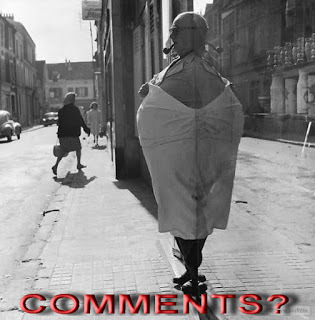
Clancy's comment: There ya go. Did you know that?
I'm ...


Published on September 25, 2015 02:48
September 24, 2015
25 September 2015 - MORE WISDOM

MORE WISDOM
G'day folks,
Ready for some more wise comments? Brace yourself.








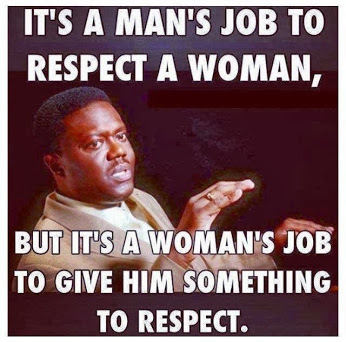













Clancy's comment: Mm ... Some great tips here today. Jot them down.
I'm ...


Published on September 24, 2015 04:26
September 23, 2015
24 September 2015 - HOW LONG DID IT TAKE TO BUILD THE GREAT PYRAMID?

HOW LONG DID IT TAKE TO BUILD THE GREAT PYRAMID?
G'day folks,
Ever been to see the pyramids? Ever wondered how they got there, and how long they took to build? Well, read on ...
The oldest of the Seven Wonders of the Ancient World and the only one that survives today, the Great Pyramid of Giza was constructed as a tomb for the Egyptian pharaoh Khufu. The precise details regarding the pyramid’s construction remain a mystery, as no written records have been found, but a number of estimates place its completion at sometime between 2560 B.C. and 2540 B.C. The pyramid initially rose about 481 feet, making it the world’s tallest man-made structure for thousands of years until it was surpassed in the early 1300s by England’s Lincoln Cathedral. Due to erosion, the pyramid now stands around 455 feet tall.
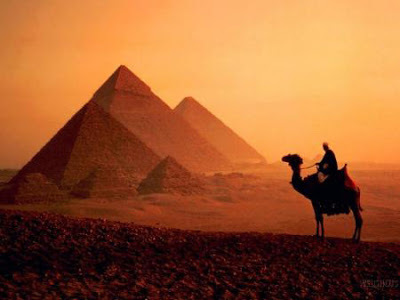
Covering an area of 13 acres, the massive monument was designed to align with the points of the compass and built with an estimated 2.3 million stones, each weighing a ton or more on average. The workforce is thought to have consisted of thousands of skilled tradesmen and paid laborers, as opposed to slaves, and estimates suggest the project took about two decades to complete. It’s been speculated that workers created ramps in order to move the stone building blocks into place on the pyramid.
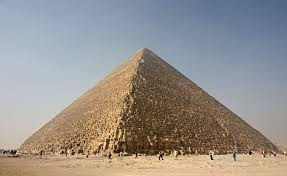
In addition to Khufu’s pyramid, two other large pyramids for pharaohs were erected at the Giza site, one for his son Khafra (it originally stood 471 feet high) and the other for Khafra’s son Menkaure (originally 218 feet high). Khafra’s pyramid complex is home to the famous Great Sphinx statue, which measures 241 feet long and about 66 feet high. Over the ages, all three pyramids have been targeted by grave robbers and much of their exterior white limestone stolen, possibly for use in other building projects.

Clancy's comment: Amazing edifices, eh? Looking back at history, I often wonder how far we have really advanced. In some things we have, but in others we have lagged.
I'm ...
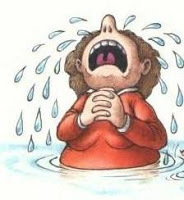

Published on September 23, 2015 04:33
September 22, 2015
23 September 2015 - TIPS FOR WRITING FICTION

TIPS FOR WRITING FICTION
G'day folks,
Here are a few tips for you writers from those who should know; courtesy of an Irish and British author.
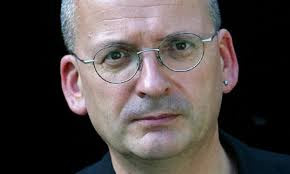
Roddy Doyle
1 Do not place a photograph of your favourite author on your desk, especially if the author is one of the famous ones who committed suicide.
2 Do be kind to yourself. Fill pages as quickly as possible; double space, or write on every second line. Regard every new page as a small triumph –
3 Until you get to Page 50. Then calm down, and start worrying about the quality. Do feel anxiety – it's the job.
4 Do give the work a name as quickly as possible. Own it, and see it. Dickens knew Bleak House was going to be called Bleak House before he started writing it. The rest must have been easy.
5 Do restrict your browsing to a few websites a day. Don't go near the online bookies – unless it's research.
6 Do keep a thesaurus, but in the shed at the back of the garden or behind the fridge, somewhere that demands travel or effort. Chances are the words that come into your head will do fine, eg "horse", "ran", "said".
7 Do, occasionally, give in to temptation. Wash the kitchen floor, hang out the washing. It's research.
8 Do change your mind. Good ideas are often murdered by better ones. I was working on a novel about a band called the Partitions. Then I decided to call them the Commitments.
9 Do not search amazon.co.uk for the book you haven't written yet.
10 Do spend a few minutes a day working on the cover biog – "He divides his time between Kabul and Tierra del Fuego." But then get back to work.

Helen Dunmore
1 Finish the day's writing when you still want to continue.
2 Listen to what you have written. A dud rhythm in a passage of dialogue may show that you don't yet understand the characters well enough to write in their voices.
3 Read Keats's letters.
4 Reread, rewrite, reread, rewrite. If it still doesn't work, throw it away. It's a nice feeling, and you don't want to be cluttered with the corpses of poems and stories which have everything in them except the life they need.
5 Learn poems by heart.
6 Join professional organisations which advance the collective rights of authors.
7 A problem with a piece of writing often clarifies itself if you go for a long walk.
8 If you fear that taking care of your children and household will damage your writing, think of JG Ballard.
9 Don't worry about posterity – as Larkin (no sentimentalist) observed "What will survive of us is love".

Clancy's comment: Hope these points have helped you. Always good to have reminders.
I'm ...


Published on September 22, 2015 03:45
September 21, 2015
22 September 2015 - HOW LONG WAS THE BERLIN WALL?
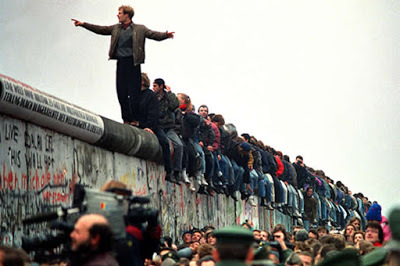
HOW LONG WAS THE BERLIN WALL?
G'day folks,
Here is another interesting question to get your minds working. Know the answer?
Few symbols better captured the Cold War divide between western Europe and the Soviet bloc than the Berlin Wall, a concrete and barbed wire barrier that divided Germany’s largest city for nearly 30 years.
As World War II wound to a close, Germany and Berlin were divided into four zones, each administered by one of the allied powers. Because Berlin was in Germany’s eastern half, the city’s British, French and U.S.-administered zones were fully surrounded by the Soviet-run areas. The Soviets set up a communist-aligned state in East Germany and sealed the border to halt the migration of up to one-sixth of East Germany’s population to the West.
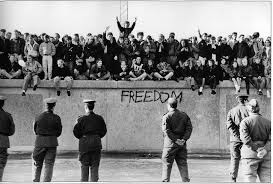
On August 13, 1961 the first incarnation of the wall went up as barbed wire strung between rows of bricked-up buildings. It was eventually made more foreboding by incorporating a row of subsidiary walls, trenches, electric fences and an open “death strip” overseen by armed guards in 302 watchtowers. (The graffiti-covered concrete slab wall featured in the most famous photographs of the wall was built in 1979).
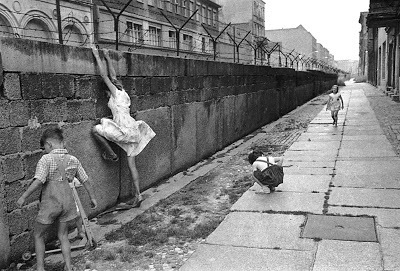
Once completed, the wall followed a 96-mile zigzag path, but only 27 miles of the wall divided East and West Berlin; the rest of the barrier separated West Berlin from the surrounding East German countryside.
On November 9, 1989 the Soviet and East German governments relaxed their border controls, and immediately Berliners crowded in to breach the wall. Within months, all but a few sections of the wall had been dismantled, destined for museums, for souvenir-hunters’ pockets or for the landfill.
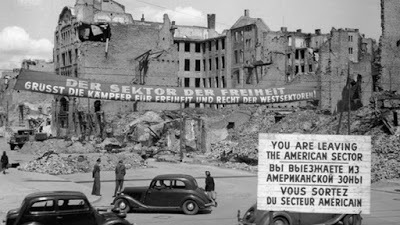
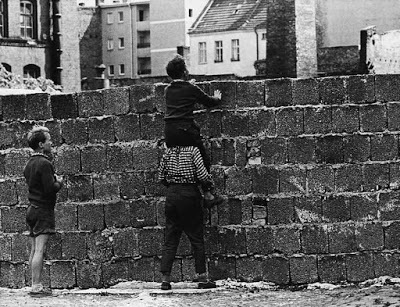
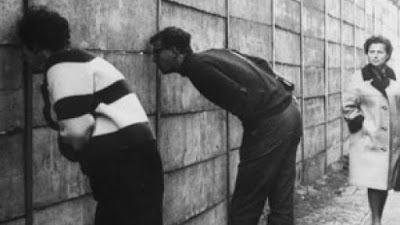

Clancy's comment: I saw it once and took many photographs. Interesting when you look back at history, how often we humans build walls. A few sad ones come to mind, like the Warsaw Ghetto. Mm ... We never seem to learn much.
I'm ...


Published on September 21, 2015 03:57



